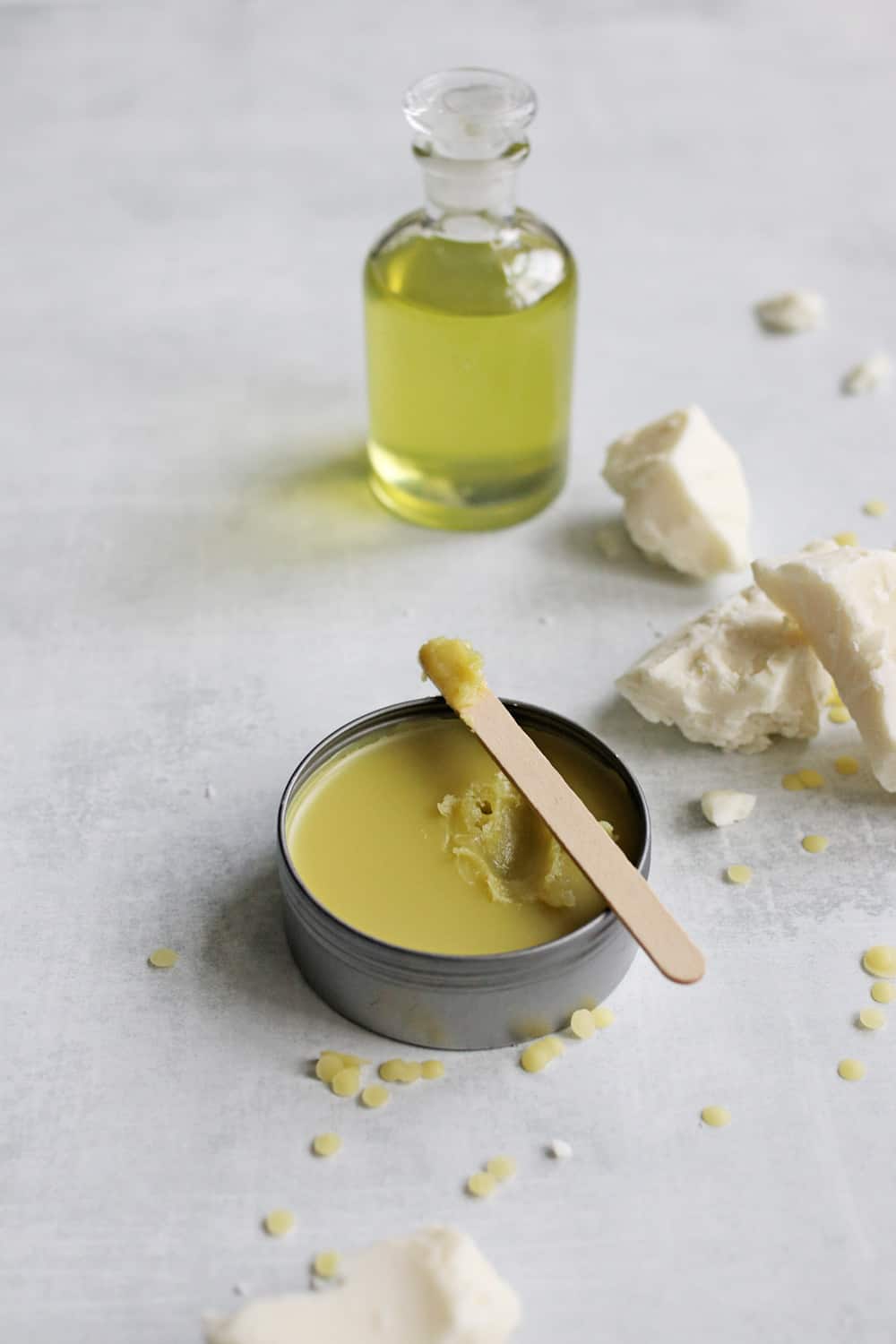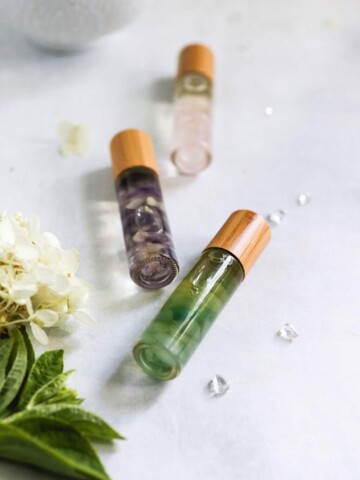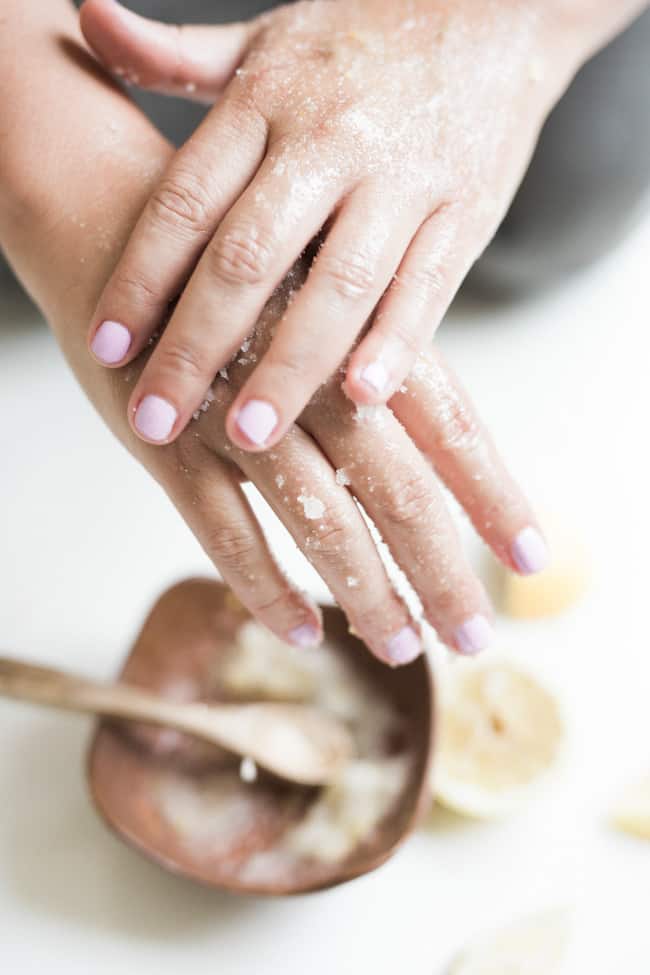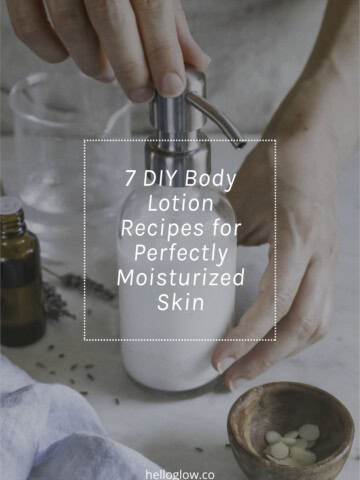Plenty of natural remedies are out there for treating varicose veins. Compression stockings, massage, and elevating the legs are usually the first choices for many [source], but there are other tips and tricks that you can do—many with ingredients already in your kitchen!

Jump to:
What Causes Varicose Veins?
As we get older, our veins lose elasticity like other parts of our body. Pregnancy can also increase the risk of developing varicose veins due to the increased amount of blood in the body, the pressure from the growing uterus, and the increase in progesterone that affects the vessel walls [source]. And as the vessels become stretched out and weakened, blood that’s supposed to return to the heart starts flowing backward and pooling.
Sometimes, this can be associated with a condition called chronic venous insufficiency, which can be painful and disfiguring [source]. It causes swelling, cramping, fatigue, and skin changes in the area, along with varicose veins [source].
More and more evidence has shown this condition to be associated with oxidative stress [source], so antioxidants should be considered helpful in the treatment.
Natural Varicose Vein Remedies
While very common as we age, varicose veins can make us feel uncomfortable in certain outfits and even lead to serious health problems. If you’re starting to see blue or purple veins on your legs that appear twisted or bulging, varicose veins are likely to blame. They can be painful at times, or they can just bug us with their appearance.
But with a little help, you’ll feel more comfortable and look great just in time for sundress and sandal weather!
1. Apple Cider Vinegar
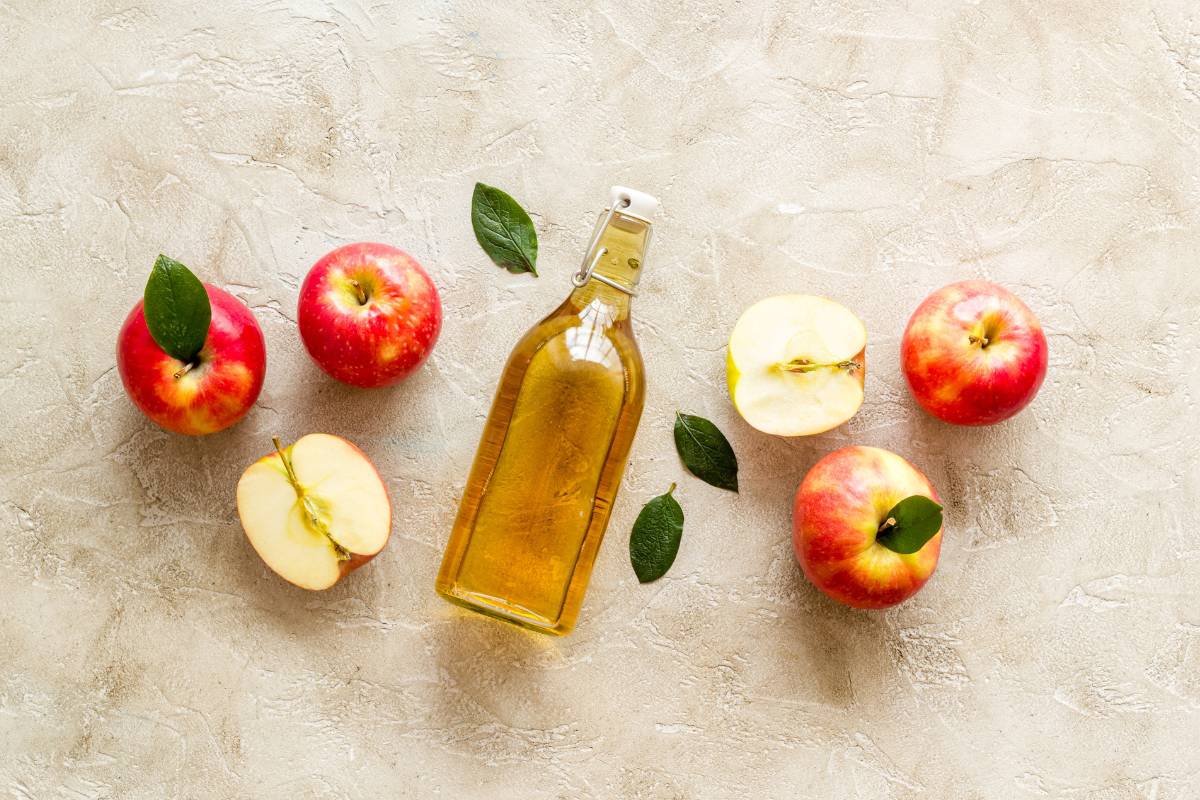
Apple cider vinegar is a miracle worker in many beauty recipes and home remedies. It’s known to improve blood circulation and flow and has been shown to help decrease varicose vein swelling when applied topically [source].
The study participants elevated their legs 45 degrees, then moistened a cloth with natural apple cider vinegar and applied it directly on the affected area by wrapping. This was done for 30 minutes once in the morning and once before bed at 1 month.
2. Cayenne Pepper

Full of vitamin C and bioflavonoids, cayenne pepper improves the function of the blood vessel walls [source]. It can also ease the pain associated with swollen veins due to its antioxidants and anti-inflammatory properties [source].
All you need to do is stir a teaspoon of cayenne pepper powder into a glass of hot water and drink it. Add honey or another sweetener if it’s hard to get down.
It always helps to just consume more peppers with your food—all types of peppers will work. And, as a bonus, cayenne pepper is a great metabolism booster!
3. Gotu Kola

This medicinal plant with the scientific name Centella asiatica has a long history of use in Southeast Asian countries such as India and Sri Lanka. It can be used for medicinal purposes to improve heaviness and swelling in the lower extremities.
It has been shown to strengthen weakened veins by improving collagen synthesis in the walls [source] and exerts an anti-inflammatory action on the surrounding connective tissue (also used in the treatment of cellulite) [source]. Gotu kola can be taken as a supplement, where it is also used to promote memory and longevity [source].
4. Parsley

Parsley contains rutin, a very powerful organic compound that directly affects capillary tone and improves the effects of oxidative stress on blood vessels [source]. In addition, its high levels of vitamin C help to increase collagen and repair damaged blood vessels [source].
I’m certainly not suggesting sitting down and eating a parsley bunch, but try incorporating this herb in more of your meals or smoothies for extra flavor and its clear health-related benefits.
5. Grapeseed Oil
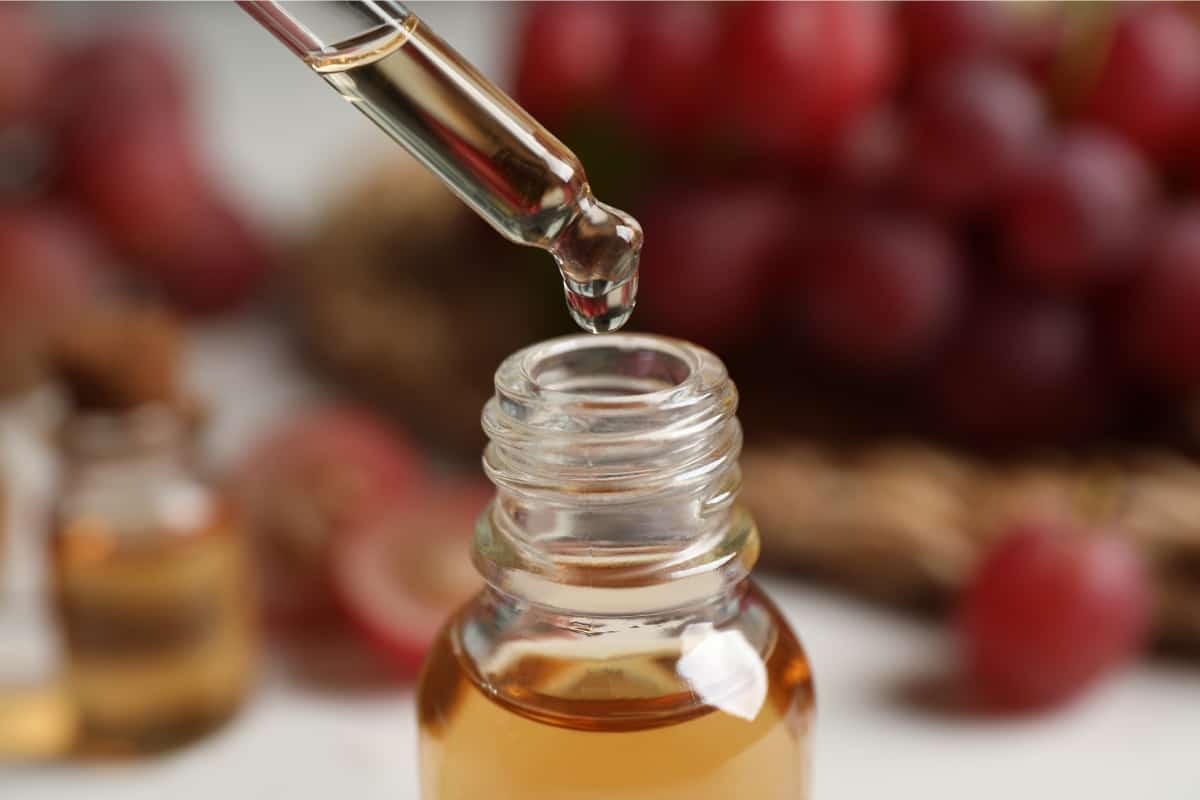
The seeds of grapes are small but packed full of flavonoids, linoleic acid, and vitamin E [source]. The antioxidant potency of grape seeds can help prevent free radical damage to the blood vessels, reduce leg swelling [source], improve vascular tone [source], and boost collagen to improve the elasticity of cell walls.
Grapeseed oil is a great moisturizer and can be applied directly to the skin over varicose veins to help relieve inflammation [source]. It can also be taken orally as a supplement.
6. Horse Chestnut Extract
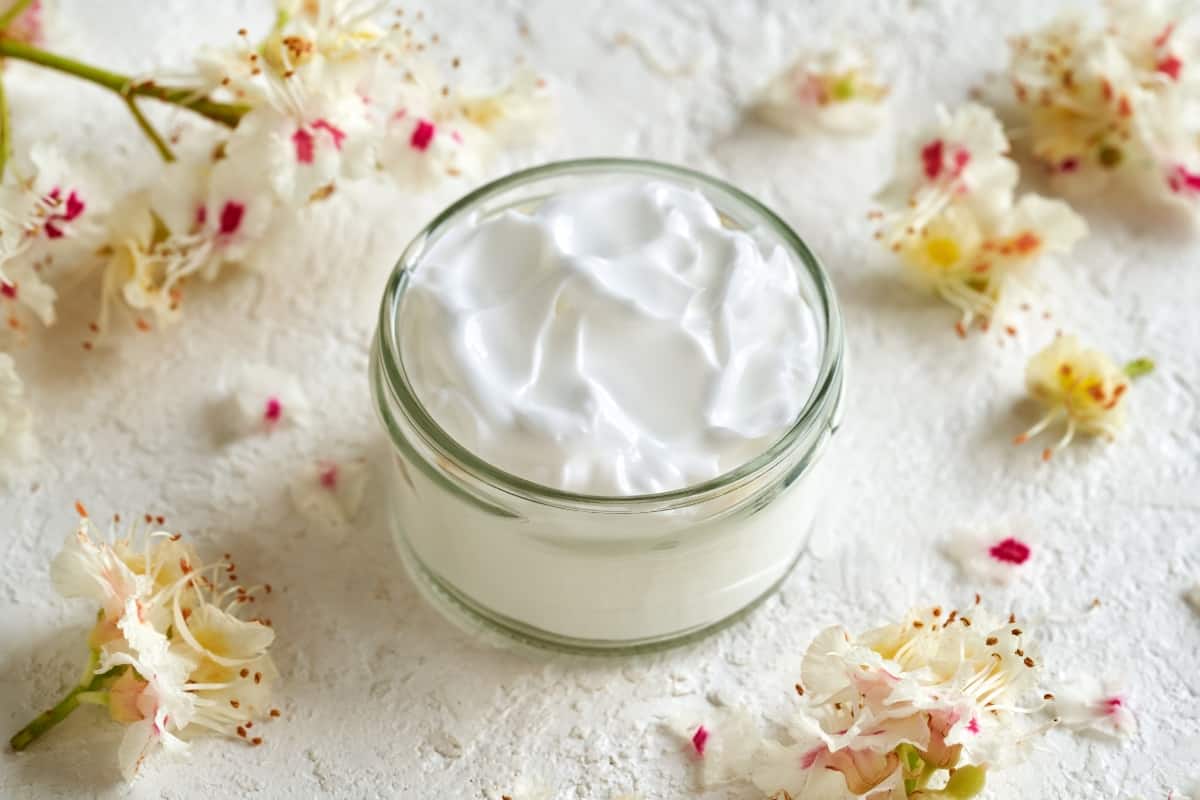
Interesting name, right? Whether you’ve heard of it or not, horse chestnut extract has a longstanding reputation for treating varicose veins.
It has been shown to prevent leakage of the blood out of veins as well as treat the leg pain, swelling, and even itching that accompanies chronic venous insufficiency [source]. Eating horse chestnuts in the raw form is poisonous, so look for horse chestnut extract in the form of capsules or liquid extracts.
7. Hydrotherapy

What wouldn’t be therapeutic about a relaxing bath or a soak in a thermal mineral water spa, also known as balneotherapy [source]? Bathing in warm water dilates the blood vessels and improves blood flow throughout the body.
There are many therapeutic options within this category, such as mineral water, exercising in water, and the use of whirlpool water massage. A study using underwater ultrasound demonstrated that when a part of the body is immersed, hydrostatic compression—the pressure of water—provides pressure on the limbs that helps flow, kind of like compression stockings [source].
8. Wear Compression Stockings

There has been a lot of research on the effects of wearing compression stockings to help improve pain and swelling [source]. But it seems the most benefit can be seen with the use of a special type called progressive (graduated) compression stockings.
These work by exerting a graduated pressure from the bottom up, helping to coax blood flow back upward toward the heart [source].
9. Move Your Body

Keeping your body moving is essential for proper blood circulation. And when your blood is pumping and flowing in the right way, varicose veins can be reduced and prevented.
It doesn’t mean you suddenly have to be a gym rat, though. Even a quick daily walk and some gentle stretching or yoga can be helpful.
10. Watch Your Weight

When you gain weight, you’re only putting more pressure on your veins (along with other health problems). Consider a whole-food, plant-based diet to reduce your weight, and up the number of healthy fruits and vegetables you consume daily.
Make sure your diet is also low in sodium to reduce water retention and swelling in the legs.
11. Switch Up Your Shoes

Many of us love our high heels, but the reality is they can be very damaging to our legs. Lower-heeled shoes work calf muscles more, which is better for blood flow in the veins.
I know I certainly can’t part with some high heels, but think about how much you’re wearing them. There are many alternatives to pulling off the same cute outfits!
12. Elevate Your Legs

It’s important to avoid sitting or standing for too long—especially if you’re dealing with varicose veins. It’s a good idea to elevate your legs above the level of your heart a few times a day to help the blood flow [source]. Besides, who couldn’t use a few circulation breaks during the day?
References
Smyth R, et al. Interventions for varicose veins and leg oedema in pregnancy. Cochrane Database Syst Rev. 2015.
Orhurhu V, et al. Management of lower extremity pain from chronic venous insufficiency: a comprehensive review. Cardiol Ther. 2021.
Youn YJ, et al. Chronic venous insufficiency and varicose veins of the lower extremities. Korean J Intern Med. 2019.
Ortega MA, et al. Patients with incompetent valves in chronic venous insufficiency show increased systematic lipid peroxidation and cellular oxidative stress markers. Oxid Med Cell Longev. 2019.
Atik D, et al. The effect of external apple vinegar application on varicosity symptoms, pain, and social appearance anxiety: a randomized controlled trial. Evid Based Complement Alternat Med. 2016.
McCarty MF, et al. Capsaicin may have important potential for promoting vascular and metabolic health. Open Heart. 2015.
Villa-Rivera MG, et al. Chili pepper carotenoids: nutraceutical properties and mechanisms of action. Molecules. 2020.
Incandela L, et al. Total triterpenic fraction of Centella asiatica in chronic venous insufficiency and in high-perfusion microangiopathy. Angiology. 2001.
Bylka W, et al. Centella asiatica in cosmetology. Postepy Dermatol Alergol. 2013.
Gohil KJ, et al. Pharmacological review on Centella asiatica: a potential herbal cure-all. Indian J Pharm Sci. 2010.
Ugusman A, et al. Role of rutin on nitric oxide synthesis in human umbilical vein endothelial cells. ScientificWorldJournal. 2014.
Dosedĕl M, et al. Vitamin C—sources, physiological role, kinetics, deficiency, use, toxicity, and determination. Nutrients. 2021.
Martin ME, et al. Grape (Vitis vinifera L.) seed oil: a functional food from the winemaking industry. Foods. 2020.
Sano A, et al. Proanthocyanidin-rich grape seed extract reduces leg swelling in healthy women during prolonged sitting. J Sci Food Agric. 2013.
Odai T, et al. Effects of grape seed proanthocyanidin extract on vascular endothelial function in participants with prehypertension: a randomized, double-blind, placebo-controlled study. Nutrients. 2019.
Khanna S, et al. Dermal wound healing properties of redox-active grape seed proanthocyanidins. Free Radic Biol Med. 2002.
Pittler MH, et al. Horse chestnut seed extract for chronic venous insufficiency. Cochrane Database Syst Rev. 2012.
Petraccia L, et al. The possible uses of balneotherapy in treating chronic venous insufficiency of lower limbs. Clin Ter. 2013.
Caggiati A, et al. Underwater sonography of leg veins. EJVES Short Rep. 2018.
Shammaeri OA, et al. Chronic venous insufficiency: prevalence and effect of compression stockings. Int J Health Sci (Qassim). 2014.
Lim CS, et al. Graduated compression stockings. CMAJ. 2014.
Rabe E, et al. What is evidence-based in the treatment of chronic venous insufficiency? Internist (Berl). 2020.
This article was medically reviewed by Dr. Gina Jansheski, a licensed, board-certified physician with more than 20 years of practice experience. Learn more about Hello Glow’s medical reviewers here. As always, this is not personal medical advice, and we recommend that you talk with your doctor.
329
